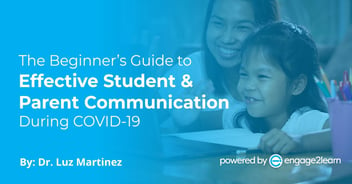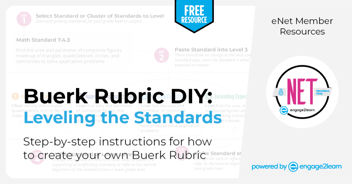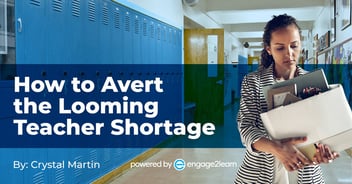Metrics: Making Vision Actionable for 1,000 Years | engage2learn
One of my favorite metaphors is that which Yong Zhao often shares, comparing the mystery of Easter Island to our present-day educational initiatives and how we measure them. In case you have not read it or heard it from Zhao yourself, the story of Rapa Nui, now widely known as Easter Island, involves the demise of that indigenous population for various, highly-debated reasons. Nevertheless, one theory remains that the Polynesians who first inhabited Easter Island were engaged in a contentious, tribal competition, and their quest to erect tremendous, labor-intensive statues–each larger and more intricate than his neighbor’s eventually led to ecocide. Put simply, the abundance of plentiful resources on Easter Island were depleted for the sole purpose of out-doing one’s rival (source). But, what does this have to do with education today?
As Zhao asserts, “The chiefs and priests on Easter Island also believed that the statues represented the health and power of their clans, the performance of their members, and promise for a more prosperous future. Test scores have no doubt become Americans’ stone statue in education,” (source). He asks the question, WHAT IF WE ARE MEASURING THE WRONG THING?
I agree with Zhao and think his wondering is one of the most important questions we can ask in education! What if we put our collective efforts into a specific goal and measure our progress toward its end, yet that end is not really our vision or aligned to our beliefs? We will have wasted our time, our lives, and worse – we will have, in turn, limited the possibilities for the lives of our youth through this disconnection.
The Council of the Great City Schools, which represents the largest urban school districts nationwide, concluded that students spend an average of 20-25 hours each academic year on test-taking alone. Click To TweetIn fact, “Seven in 10 teachers, and 55 percent of administrators, said state accountability tests take too much time away from learning,” according to Education Week. The Council of the Great City Schools, which represents the largest urban school districts nationwide, concluded that students spend an average of 20-25 hours each academic year on test-taking alone. Moreover, that staggering statistics does not even include the time spent preparing for those assessments, which accumulate to some 112 mandatory standardized tests from pre-kindergarten to 12th grade (source). Lastly, Pearson Research Scientist, Dr. Steve Ferrara, analyzed the Brookings’ Institute Strength in Numbers: State Spending on K-12 Assessment Systems report to project that we will spend an astonishing $1.7 billion annually on standardized testing (source).
It seems clear and simple in other industries: to ensure that vision becomes reality, measure the progress towards that vision. Well, the same can be true for education. We want to ensure that learners are prepared to thrive in the world. We need to measure that vision.
At engage2learn, we have worked in dozens of communities all across Texas and beyond, helping them to craft a vision for their learners and for the ideal learning experience in their schools. Through this backwards design process, we then look for a pattern and assign metrics to that community’s vision. Almost always, the design team starts to falter: “What we really want is hard to measure.” This often causes them to revert back to standard, easy-to-measure educational tools. Yet, why would we use such tools if they are not truly aligned to the vision just captured by the design team? Why not find a better way?
American psychologist Edwin A. Lock first developed the Goal-Setting Theory, which asserts that “goals activate motivational mechanisms that stimulate performance,” (2013). More recently, he updated that research with fellow organizational psychologist Gary P. Lantham in their work New Development in Goal Setting and Task Performance (2013). Goal ambiguity remains (Hoek, Groeneveld, & Kuipers, 2016) and is especially prevalent in the public education realm. So how do we measure learners and their learning in a 21st Century learning environment that infuses the academic curriculum with life-ready skill development?
My advice is this: measure what you value, or you will value what you measure. Dr. Michael Hinojosa, Dallas ISD Superintendent, proclaims that a vision is a dream with a deadline. I have a vision that 10 million students will be life-ready learners and citizens by 2020. It is a dream, and it has a deadline.
My advice is this: measure what you value, or you will value what you measure. Click To TweetThis lofty vision will support our e2L mission, which is to ensure that the neighborhood, public school is the first choice for every family, but how can we possibly make that vision actionable? Well, we tried to find a measure that would help us determine if and when a learner was truly life-ready. Since we did not find one, we created the tools we needed in the form of our Life Ready Skills Assessment (in development), Life Ready Skills Rubrics and Life Ready Skills Perception Survey.
To echo Zhao’s metaphor, I want to conclude by saying that there is nothing wrong with standardized tests, but these facts remain. Our current measurement system, in the form of state-mandated, multiple-choice, annual assessments, is not aligned to our vision for learners’ futures; they do not measure what is worthwhile to students’ mastery, and they are creating tremendous opportunity costs. We keep iterating this same system to build a bigger and better assessment and, yet, what if we thought about assessment completely differently? As Zhao says, “Just like the Easter Islanders’ obsession with building statues damaged their ecosystem, America’s obsession with test scores have already begun and will continue to damage its education ecosystem,” (2011).
What could be done with that time instead? How can we help students benefit more from relevant, meaningful tools that gauge their readiness for success beyond those school walls? How will you make your vision for learners an actionable reality? Some of the recent changes to legislation, accountability, and policy are a start in this direction, but we need to move the needle further faster. Share your ideas in the comments below.



